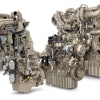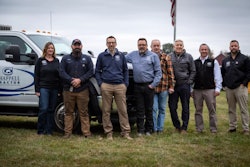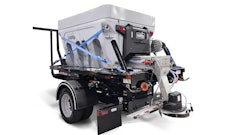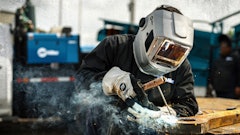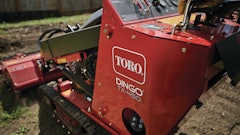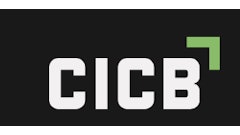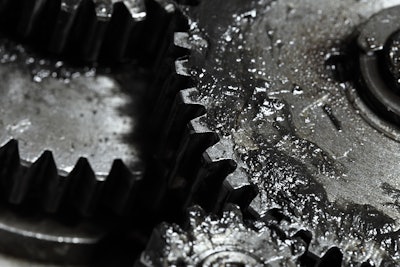
Grease selection is often an overlooked variable when it comes to keeping construction equipment running reliably under the harshest conditions. Yet for teams responsible for maximizing uptime and minimizing wear, understanding how greases are engineered and tested for high-load, high-temperature and high-contaminant environments is essential.
Standard greases might suffice under moderate conditions, but extreme environments demand more. In real-world construction scenarios, equipment regularly endures multiple stressors simultaneously: intense shock loads, high ambient temperatures, water spray and the ever-present challenge of abrasive dust and dirt. The right grease can be the difference between prolonged equipment life and unexpected downtime.
Where Standard Greases Fall Short
While many greases meet baseline industry standards, they often lack the resilience needed for the types of compound stresses seen in construction and off-highway operations. Simple lithium or calcium-based thickeners, for example, can struggle with water resistance and heat stability. In contrast, more advanced thickeners, such as calcium sulfonate complexes, offer significantly improved water spray-off resistance and thermal performance.
Why does this matter? In high-load environments, bearings generate more heat. Without sufficient film strength and thermal stability, standard greases break down faster, leading to increased wear. In wet or contaminated conditions, inferior water resistance means the grease is more likely to wash out or degrade, leaving critical surfaces exposed.
Validating Grease for Extreme Conditions
The most rigorous way to assess a grease's performance is through real-world field testing, which involves putting the product through its paces in the specific environment where it will be used. However, product development typically begins in the lab, where ASTM standards guide the testing process. These include:
- Four-ball weld and Timken OK load tests to assess load-carrying capacity
- Water spray-off and water washout tests to measure water resistance
Greases designed for extreme environments are engineered to exceed these minimum thresholds. For example, a standard extreme pressure (EP) grease might pass the basic test parameters, while a grease formulated for severe conditions will show significantly higher tolerances.
But lab tests aren’t enough on their own. That’s why advanced greases undergo extended field trials to confirm they meet or exceed expectations in real operating conditions. Field data adds credibility to performance claims, giving reliability teams confidence that the grease will hold up under pressure.
Understanding Grease Standards and Certifications
Beyond performance testing, industry certifications can help maintenance professionals vet grease claims. The National Lubricating Grease Institute (NLGI) offers two key designations:
- GC-LB, a long-standing standard primarily for automotive use
- HPM (High-Performance Multiuse), a newer standard geared toward off-highway and industrial applications
HPM also includes optional subcategories such as high-load and water-resistance performance, helping buyers choose greases tailored to their conditions. Importantly, products bearing the HPM certification are subject to annual third-party testing, giving users added assurance that the product’s quality and performance will remain consistent over time.
Trends in Grease Innovation
While the core science of lubrication is well-established, innovation continues to shape grease formulations. Regulatory pressures, for instance, are prompting the industry to move away from certain traditional additives due to safety or environmental concerns. In response, new additive chemistries are emerging to meet both performance and sustainability targets.
At the same time, supply chain disruptions, such as recent shortages in lithium, have sparked interest in alternatives. Calcium sulfonate, polyurea and other advanced thickener technologies are gaining ground, not just for availability but also for superior performance. These alternatives offer better thermal stability, water resistance, and mechanical strength, which is especially important in demanding construction and mining environments.
Evaluating Technical Data Sheets
When selecting grease for critical equipment, maintenance teams should start by consulting the OEM manual, which typically specifies the type, viscosity and performance requirements for lubrication. But when that information isn’t available, technical data sheets become the next best resource.
Key data points to review include:
- NLGI grade
- Base oil viscosity
- Load capacity (Four-ball weld, Timken OK load)
- Water resistance metrics (spray-off, washout)
- Compatibility with other grease types
However, interpreting this data correctly requires some experience. For example, a grease certified under HPM might have enhanced water resistance performance, which is great for waterborne applications but may not be the right choice for shock-loading conditions if that’s not its certified strength. Knowing which attributes matter most for your environment is key.
A Real-World Example: Grease That Performed Under Pressure
In one recent field trial, a construction team tested a high-performance grease in a wheel loader’s pin and bushing assembly at a rock quarry. This was a punishing environment, characterized by extreme shock loads, dust, water spray and fluctuating outdoor temperatures.
The incumbent product worked but required frequent re-greasing and showed signs of separation under heat. The new Calcium sulfonate complex technology-based grease, fortified with solid additives and designed for high durability, maintained its integrity under the same conditions. The team reduced their grease consumption by approximately 25%, extended the re-lubrication interval, and avoided the premature wear that had previously plagued them.
That performance translated into cost savings and more consistent uptime, proving the impact that a well-engineered grease can have when it matches the application.
Upskilling Teams and Avoiding Common Pitfalls
Despite its importance, grease is often an afterthought in many operations. That needs to change. Training programs from organizations like NLGI and STLE can help teams better understand how to evaluate grease claims and select products that are fit for purpose.
Awareness of compatibility is also critical. When switching products, residual grease can impact performance or even cause damage if the new and old formulations are incompatible. In high-volume systems, purging lines thoroughly or selecting a grease with broader compatibility tolerances can help mitigate these risks.
The Right Grease Is Worth the Investment
Choosing the right grease isn’t just a maintenance task, but a strategic decision that can impact safety, uptime, and total cost of ownership. Construction teams working in harsh environments should prioritize high-performance greases that are tested, certified and proven in the field. And just as importantly, they should invest in the knowledge and training needed to make informed lubrication decisions. Because under pressure, the right grease makes all the difference.



